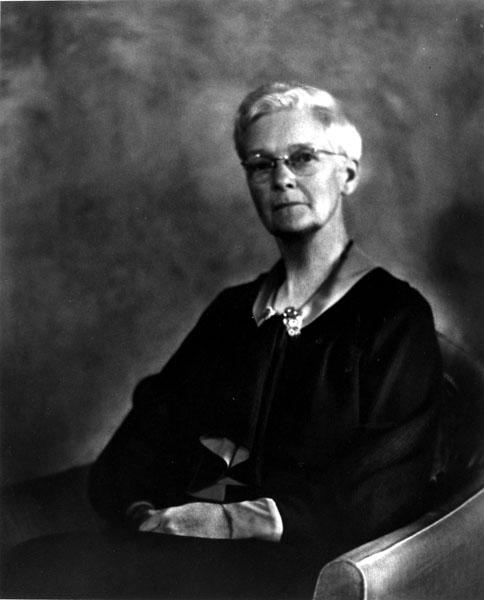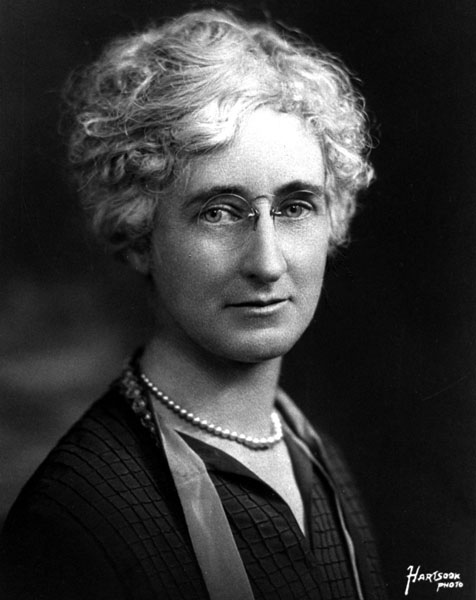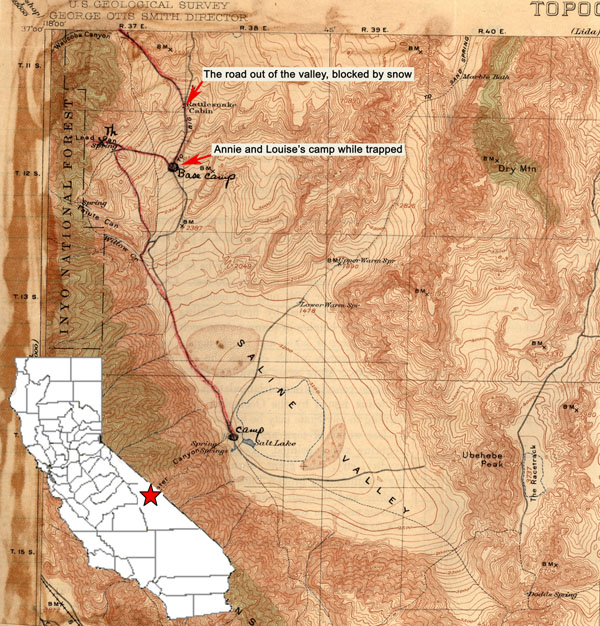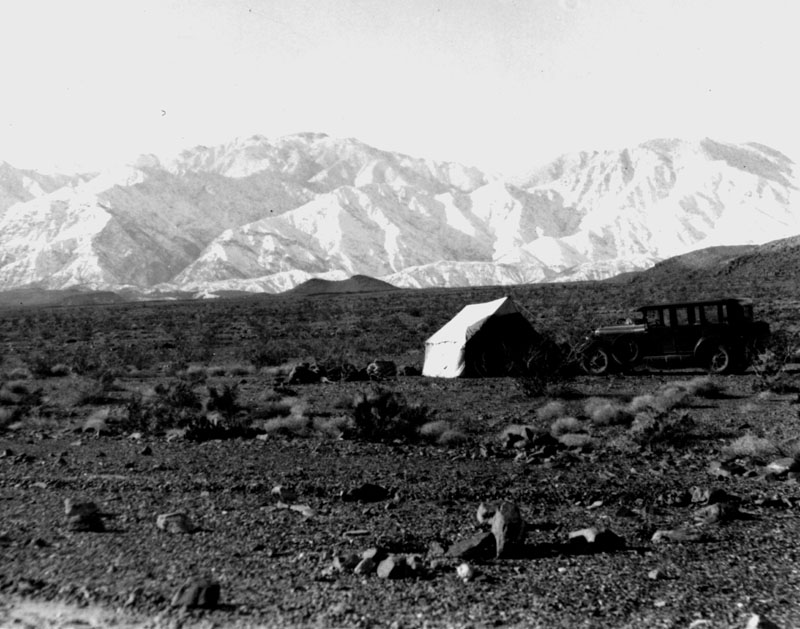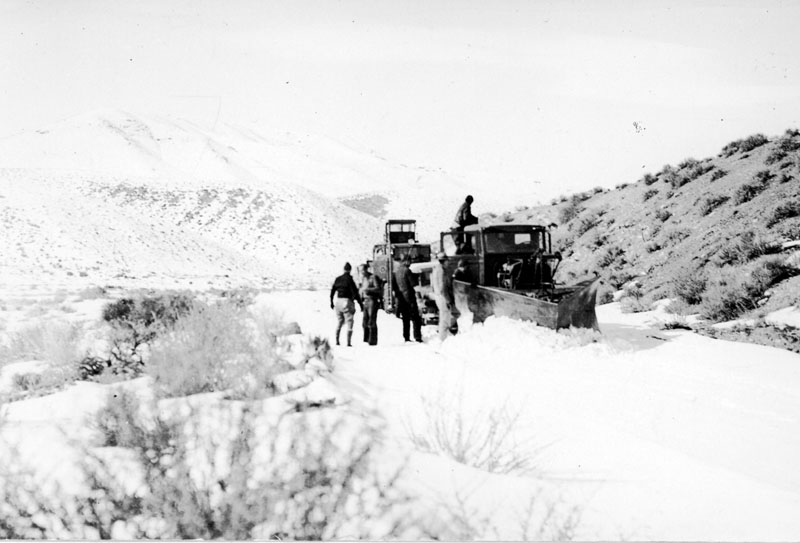Decades before GPS units, cell phones and SUVs with 4-wheel drive, collectors valiantly journeyed into difficult terrain and remote, never-before-collected locations to bring valuable specimens back to the MVZ. With roads and settlements in these localities not yet constructed, such expeditions were lucky if they found a trail to follow. Combined with a lack of easy communication methods, such treacherous traveling conditions had the potential to create unforeseen complications for the collectors.
The story described in “Snowbound”, presented as a display at Cal Day on April 21, 2012, is just one example of the challenges that collectors willingly faced and boldly overcame for the sake of the MVZ’s research and collections.
……………………………………………………………………………………………………………………………….
Annie Alexander and Louise Kellogg: Snowbound
On December 22, 1936 in the town of Big Pine, California, MVZ founder Annie Alexander (1867-1950) and her companion Louise Kellogg (1879-1967) packed up their Franklin automobile with supplies and headed out for Saline Valley in Inyo County, California, an area previously unexplored by the MVZ. Unfortunately for the two women, what began as a week-long collecting trip soon transformed into a month-long exercise in survival.
With a sudden burst of inclement winter weather near the New Year, Annie and Louise’s only viable way out of the valley became blocked by a thick layer of impenetrable snow.
Their attempts to make their way through the snow proving fruitless, even with the assistance of miners from the nearby Bunker Hill mine in Lead Canyon, the women had no choice but to make camp and await rescue.
It would not be until January 26, 1937 that a rescue expedition, set in motion by worried MVZ director Joseph Grinnell and executed by museum preparator Ward Russell and his assistant Bill Richardson, would prove successful in clearing the road and extricating Annie and Louise from the valley.
The Sequence of Events
January 1937
In the first week of January, Annie and Louise make camp about 3½ miles east of the Bunker Hill mine and remain there until their rescue, subsisting largely off of the “pink” beans and corn meal they had brought with them, and a few additional provisions supplied by the miners. As for their daily routine, Annie wrote in a letter to Joseph Grinnell on January 22, 1937 that “keeping warm is a prime necessity and our mornings are spent splitting wood in the wash with our invaluable cold chisel and axe…In the afternoons we chop the various pieces we have brought and I add to the various journal letters I am keeping to my friends.”
January 14, 1937
Joseph Grinnell takes action:
At the Museum January 14, 1937 10 a.m. Dear Miss Alexander: I have decided to launch a “field trip” to the Inyo country – this very quietly, to get first-hand information that will reassure friends of you and Miss Kellogg, who are, I am convinced, truly suffering from worry. Then there is a chance that you, yourself, would find use for assistance in retrieving your equipment – in the case you decided to come over the “divide” without it. Anyway, to the point, Ward Russell, with his companion, “Bill” Richardson, are starting off, with the Reo. They are experienced; and Russell, I am confident, you will find to have shown good judgment under whatever circumstances you organize. I know, and Mrs. McDonald knows (she is a brick!), that you and Miss Kellogg are thoroughly well qualified field people – to care for yourselves under any sort of conditions imposed by Nature. But worry (on the part of others) is, more or less, a human attribute. It might be that your Franklin is out of commission. Please give Russell suggestions on any score whatsoever. Here is a chance to try him out, in the matter of judgment. I am confident of his practicality. Also I (and of course the people across the Bay) will welcome direct news from you. I know you are having wonderfully interesting experiences – at least to tell about later. And the collections you have been getting evidently contain valuable things, accompanied as they will be, by your field notes so fully entered. Most cordial regards to Miss Kellogg. Sincerely, Joseph Grinnell
